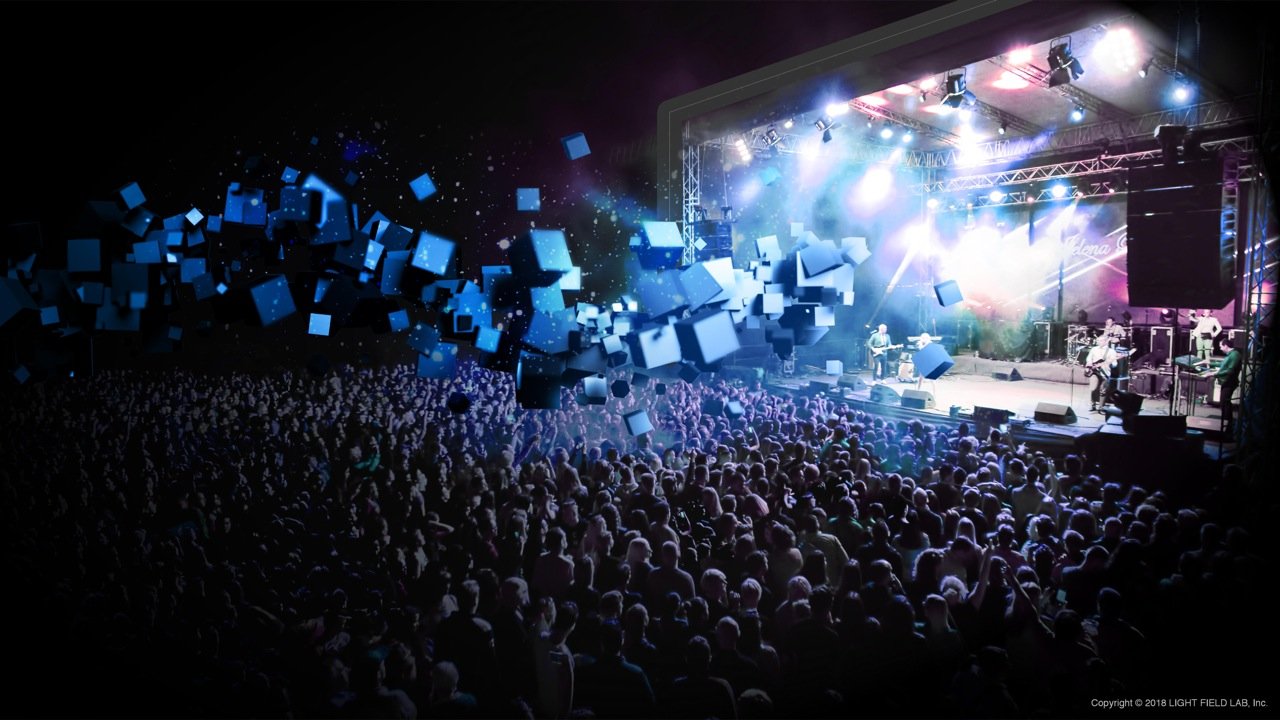 EMERGING TECH
EMERGING TECH
 EMERGING TECH
EMERGING TECH
 EMERGING TECH
EMERGING TECH
Display technology startup Light Field Lab Inc. announced today that the company has raised $7 million in seed money to develop real-world holographic displays.
The highly sought-after technology would give life to three-dimensional computer graphics that would appear in midair without the need for augmented-reality headsets and would allow users to interact with the holograms as if they were actual objects. Khosla Ventures and Sherpa Capital led this round, with participation from four other investors including R7 Partners.
“Light Field Lab has the potential to change the way we view and interact with media,” Vinod Khosla, founder of Khosla Ventures, said in a statement. “This is essentially the holy grail of optical display technology, enabling things that seem like science fiction to be possible today.”
Jon Karafin, chief executive of Light Field Lab, told VentureBeat in an interview that the objective of the company’s technology is to eventually approximate the capabilities of the fictional Star Trek Holodeck.
The Holodeck is basically a room with bare walls that can project anything, creating real-world simulations of people, cities, alien worlds and other objects for the purposes of entertainment and training. The concept of simulations is a common concept in science fiction where the line between what is augmented or virtual reality becomes blurred to the point where the simulation is reality.
The technology to do this does not exist today and, although ambitious, Light Field Lab’s solution will not be quite so magical. Instead, the holographic device, which has only been demonstrated behind closed doors so far, currently looks like a flat screen that projects a volumetric image into the space next to it.
For now, the screens are small – six inches by four inches – but the modules intended for production will be two feet by two feet. Karafin said that eventually many of these screens could be fitted together in order to produce high-resolution holograms that could fill larger spaces.
“Projecting holograms is just the beginning,” said Karafin. “We are building the core modules to enable a real-world Holodeck. The strategic guidance offered by our investors is critical to enable these breakthrough technologies.”
Karafin said that he foresees this technology as a way to create holographic performers for concerts. An example of which happened during Coachella 2012 when a seemingly “holographic” Tupac Shakur appeared on stage and performed for the audience.
However, this effect was not an actual hologram, according to Karafin, but instead an implementation of a centuries-old illusion known as Pepper’s Ghost. This illusion creates the appearance of ghostly, transparent figures using mirrors who seem to float ethereally in a scene – such as the ghosts in Disneyland Park’s Haunted Mansion ride in Anaheim, California.
Karafin envisions 100-foot panels at concert venues capable of projecting giant, amphitheater-spanning holograms similar to Light Field Lab’s concept art (pictured).
The technology would have a large number of potential applications outside of entertainment as well. For example, car dealerships could display full-sized cars from projectors mounted on floors or ceilings and furniture retailers could project entire rooms full of merchandise. An engineer with such a device could have a model projected into midair and modify it with some sense of the volume and space the model possesses in a real sense.
Although not yet seen by most of the world, if the Light Field Lab’s technology works anything close to expectations, it will be a leap forward for entertainment.
The Light Field Lab team has a formidable background. Although the company was founded in 2017, Karafin says that he has been thinking about this sort of technology for a decade. He and his two co-founders, Chief Technology Officer Brendan Bevensee and Vice President of Engineering Ed Ibe, previously worked at Lytro Inc., a company that develops “light field” cameras capable of capturing entire 3-D scenes by tracing back the angle and incident reflection of light rays. This technology could prove useful for making virtual reality scenes in extremely high-fidelity would be equally useful for making “hologram” photos and videos for use with the Light Field Labs projectors.
Karafin told Business Insider he wants to get the larger panels ready by 2019 and this seed round will give the company what it needs to get there. “We closed the seed round to optimize the prototype and be able to share that in order to raise the Series A as we go into large-scale manufacturing,” Karafin said.
Support our mission to keep content open and free by engaging with theCUBE community. Join theCUBE’s Alumni Trust Network, where technology leaders connect, share intelligence and create opportunities.
Founded by tech visionaries John Furrier and Dave Vellante, SiliconANGLE Media has built a dynamic ecosystem of industry-leading digital media brands that reach 15+ million elite tech professionals. Our new proprietary theCUBE AI Video Cloud is breaking ground in audience interaction, leveraging theCUBEai.com neural network to help technology companies make data-driven decisions and stay at the forefront of industry conversations.